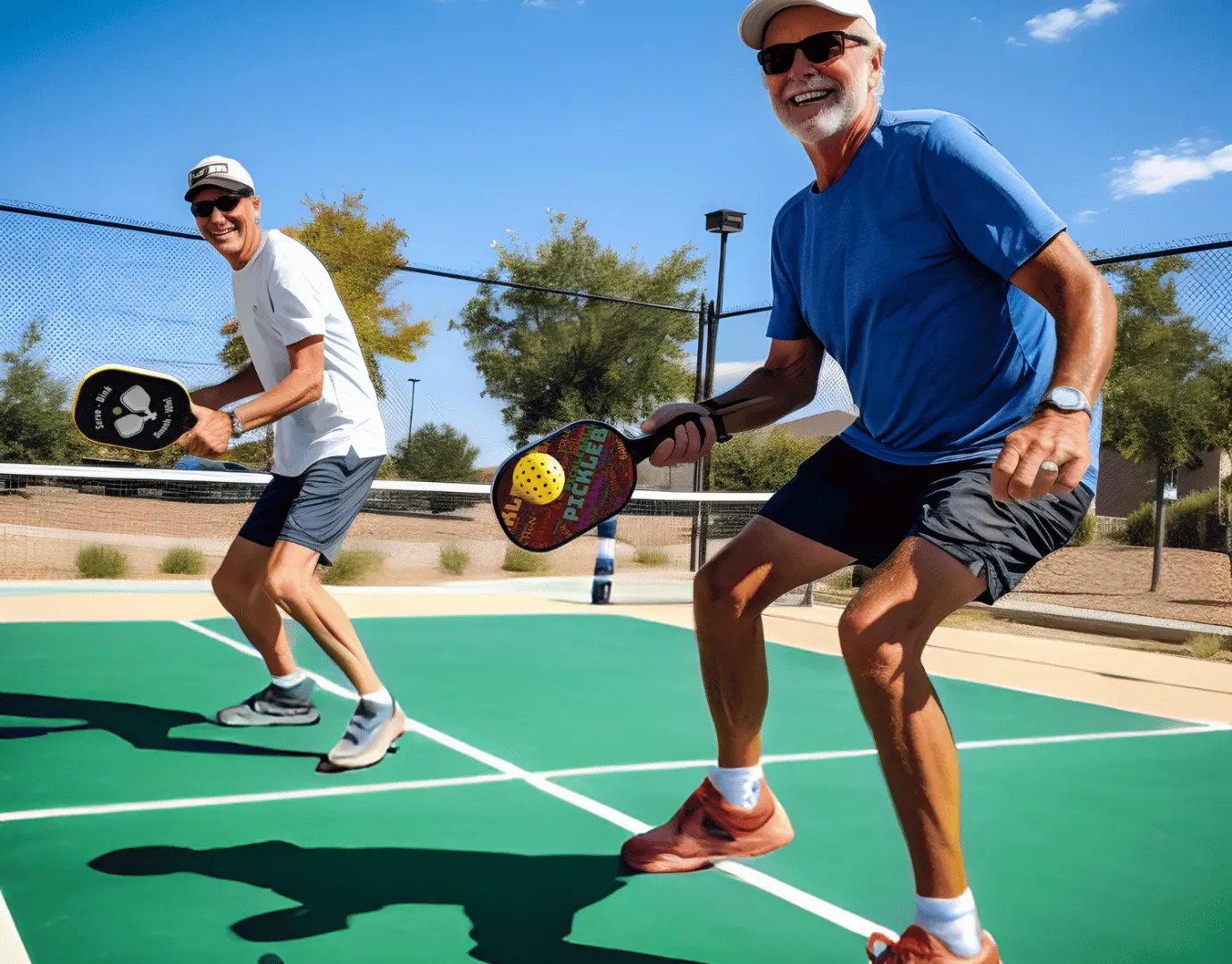The Science of Pickleball and Strategies behind the Sport
- Team Pickleball

Hello, Pickleballers! Welcome to another installment of our Pickleball blog. Today, we’ll deep dive into the Science of this entertaining sport. The beauty of the game of Pickleball lies not only in the simplicity of its rules but also in the complex dance of physics, biomechanics, and strategy it entails. These words, inspired by Albert Einstein, perfectly encapsulate the fascinating world of Pickleball sport.
Moreover, from the way the ball bounces to the biomechanics of a perfect serve, we’ll break down the scientific principles that make Pickleball truly remarkable. Whether you’re a seasoned player or a beginner, this exploration will deepen your understanding and appreciation of the game’s underlying mechanics. So grab your Pickleball paddle, and let’s get started! But first, Join us as we deep dive into the science of Pickleball that drives those thrilling Pickleball rallies, and strategic plays on the Pickleball court.
Chapter I - The Physics: Exploring the Science of Pickleball
 Understanding the science of Pickleball is important for players to significantly gain an advantage in their game strategy and outcomes on the Pickleball court. Here are some key scientific concepts that significantly impact your play:
Understanding the science of Pickleball is important for players to significantly gain an advantage in their game strategy and outcomes on the Pickleball court. Here are some key scientific concepts that significantly impact your play:
- Impact Dynamics – Whenever the ball touches the paddle, the rules of physics come into action. Specifically, the ball’s angle, speed, and rotation influence its behavior. Therefore, mastering topspin, backspin, and sidespin are essential because they significantly impact the ball’s path.
- Ball Speed and Kinetics – Pickleball’s speed also changes with the player’s swing. Additionally, the ball’s mass and the speed from the player’s motion add to kinetic energy. Likewise, achieving the right mix of power and control is necessary to get the most out of the ball.
- Court Geometry – Similarly, the Pickleball court’s design brings in various geometric factors. Specifically, angels, distances, and the Non-Volley Zone all matter.
Chapter II - The Biomechanics: Exploring the Science of Pickleball’s Athletic Dynamics
 The study of how the human body moves, also called biomechanics, plays a vital role in Pickleball. Furthermore, it helps improve performance and reduces the risk of injuries. In addition, here are some ways that the player’s specific biomechanics affect the outcome of the game:
The study of how the human body moves, also called biomechanics, plays a vital role in Pickleball. Furthermore, it helps improve performance and reduces the risk of injuries. In addition, here are some ways that the player’s specific biomechanics affect the outcome of the game:
- Footwork – Being quick and efficient in moving your feet is equally important to get to the right spot to hit the ball. Additionally, players need to stay balanced and position their feet correctly to reach the ball effectively.
- Body Mechanics – By using the right technique for holding the paddle, swinging, and striking the ball can significantly impact your Pickleball shot’s accuracy and power.
- Preventing Injury – Understanding how to move and hit the ball properly can not only lower the chances of getting Pickleball injuries but also improve your overall performance. Additionally, when players use biomechanical principles, they can prevent excessive exertion and stress on their bodies.
Chapter III - Mastering the Science of Strategic Play in Pickleball
 Pickleball involves more than just hitting the ball back and forth. In fact, it’s a game that requires strategy, skill, and anticipation. While there are many ways to strategize your game, the following are three vital strategies that can improve any player’s game:
Pickleball involves more than just hitting the ball back and forth. In fact, it’s a game that requires strategy, skill, and anticipation. While there are many ways to strategize your game, the following are three vital strategies that can improve any player’s game:
Dinking and Volleying – Two key strategies in Pickleball are dinking and volleying. Pickleball dink involves a gentle shot over the net, while Pickleball volley involves hitting the ball in the air before it bounces. These techniques are essential because they can exert pressure on opponents and help control the game’s tempo.
Shot Placement – Players must strategically place their shots to keep opponents alert. By targeting specific areas in the court, they not only can set up winning chances but also make opponents make mistakes.
Mind Games – Pickleball also includes the mental side of the game such as trickery, concentration, as well as understanding your opponent are all part of the strategic toolkit.
Chapter IV - Conclusion
In conclusion, the science of Pickleball adds a complex dimension to the sport, ranging from a basic backyard game into an engaging activity. As we explore the science of Pickleball, let’s keep asking, learning, and ultimately enjoying this remarkable game. Lastly, you may also visit the USAPA’s Official Website for more info.
Once again, we want to express our gratitude to all the players, coaches, and fans who have embraced this sport and made it to what it is today. Your commitment and support have indeed fueled the growth of Pickleball. We look forward to witnessing how the sport develops with fresh ideas and tactics!
Would you like us to feature your brand in our upcoming Pickleball blog post? Collaborate with us.
